This week I am currently buried under a mountain of school supplies getting my 3 kids ready for back to school! Luckily, the talented Marlena from @apenandapurpose offered to share her bullet journal wisdom! She’s applying her training as a licensed psychologist to show how you can use a bullet journal to change your habits! Let me introduce you guys to Marlena and I’ll let her take it from there!
How to Change Your Habits with a Bullet Journal
A bullet journal can be a powerful tool for changing behavior and negative habits if you know how to use it correctly.
If you want to change your behavior, it’s important to understand how to use your bullet journal as a tool. In this post, I’ll discuss how to use self-monitoring and tracking in your bullet journal as a way to make changes in your life.
(Not sure what a Bullet Journal is? Check out How to start a Bullet Journal!)
Get Clear On Your Goals
Before you start tracking a behavior, you’ll want to get clear on the goals you want to accomplish. Just having a tracker is not going to result in you reaching the goal. You’ll have to do the work, so you want to make sure you’re committed to your goal first.
If you want to use your journal for real change, you have to pick something important to you. I suggest you limit the goals you’re working on changing to just a few rather than filling up a whole page of squares. You want to keep things as simple as possible so you can take necessary steps to make changes.
You don’t want your bullet journal tracker to be overwhelming. Then you’re not even going to want to fill it out!
Having a goal that’s important to you is key because when times get tough you may need to have a strong “why” behind it. To make progress you’ll have to act and it’s hard to keep up a behavior if you lack real desire to reach the goal.
Have you ever joined a weight loss program or purchased a book because you kind of felt like you should but then never followed through with it? You learned quickly that just buying the thing didn’t mean that you would get the results you wanted. Change is hard work!
Make Your Goals Specific and Measurable
When choosing a goal, you want to ensure that it’s specific and measurable so you know how to mark it as complete on your tracker. Let’s say your goal is to “be a nice person.” Would you know whether you were completely successful with this goal each day? It would be hard to know because it would be subjective. On the other hand, if you get specific and say you want to give 3 compliments a day you’ll know for sure whether you did that!
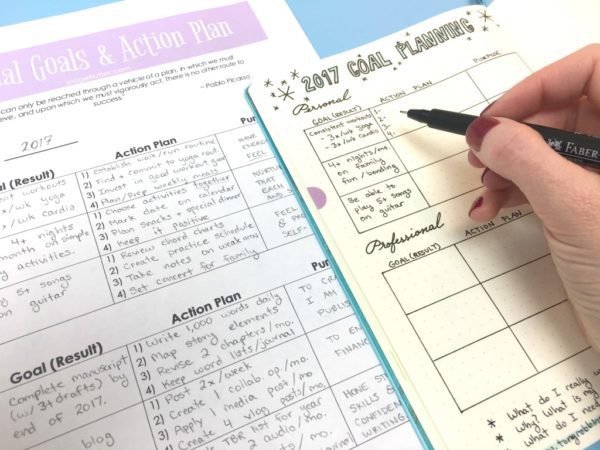
One way to ensure whether your goal is specific is to try the actor test. If you told someone to act out your goal, could they do it? For example, If I say “be a nice person” there wouldn’t be a clear direction on how to act that out. There are a bunch of options and many would not be relevant to what I was asking. On the other hand, if I asked someone to give three different compliments per day they would be able to do that.
How Do Bullet Journal Trackers Help With Change?
Using a bullet journal to track behaviors you want to change is a powerful mode of monitoring your own behavior. You can find many examples of bullet journal trackers to give you inspiration.
Sometimes we build up habits, doing things a certain way for so long that we don’t even notice. The first step to changing a behavior is to be aware of it.
Weight loss programs often use this concept when they have you track your food intake. Without measuring and tracking what you eat you will likely underestimate and believe you are doing better than you are. We have a tendency to ignore all the little bites we take when we “try” things.
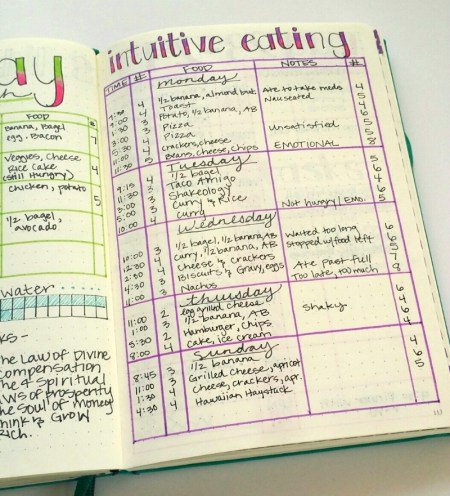
When you track things you’re participating in something called “self-monitoring.” Just the act of paying attention to what you’re doing changes your behavior. You’ll stop mindlessly putting food in your mouth if you have to write everything down.
Tracking Creates Awareness
Once you start consistently tracking in your bullet journal you will become more aware of how your behavior is triggered and what maintains that behavior.
In the book The Power of Habit by Charles Duhigg, he talks about habits following the pattern of cue, routine, and reward. Essentially what this means is there is something in the environment that prompts a certain behavior. The behavior is then habitually performed, then reinforced by some sort of reward.
When you drive past your favorite pizza joint, you turn around and go get pizza. When you sit down to watch a movie, you reach for popcorn. Whatever it is, there is something in the environment that cues you to participate in the behavior (routine) you always do. Once you participate in the behavior you are rewarded or reinforced in some way (yum pizza).
Increase a Behavior
So understanding this we know that to increase a behavior you want to cue that behavior either by whatever cues it in the environment naturally or by some sort of visual reminder. In comes your bullet journal.
Reviewing your bullet journal pages can act as a visual reminder that you should do more of the behavior you are tracking. In a post on developing a consistent journal practice, I suggested keeping your journal somewhere where you’ll see it every day as a reminder to work on it. Otherwise out of sight, out of mind. The visual cue helps with consistency. You can also use routine as a cue by always writing in your journal after you brush your teeth for example.
The next thing you want to think about when increasing a behavior is what kind of reward you will receive for doing so. Rewards work best if they are immediate. A reward can be as simple as seeing your progress over time in your bullet journal. Seeing progress can help you stay engaged with your goals.
When you track your weight it’s reinforcing to see the number go down over time. Imagine if you couldn’t see ANY progress until you reached your goal. It would be next to impossible to succeed.
Decrease a Behavior
Similarly, you can use your bullet journal to track a behavior you want to decrease. Although you could use the bullet journal as a visual cue not to do something; however, that’s a bit more difficult because there’s something outside of your journal that’s cueing you to act.
Let’s go back to the example of going to the movies and eating popcorn since these two things go together so perfectly. When you go to the movies, you want to have popcorn. (That’s a rule, right?) If you’re trying to cut carbs eating popcorn won’t work for you. In this case, you’ll have to be aware of your triggers are, or what cues you act on the behavior. Once you gain this awareness you can go into the situation with intention and skills.
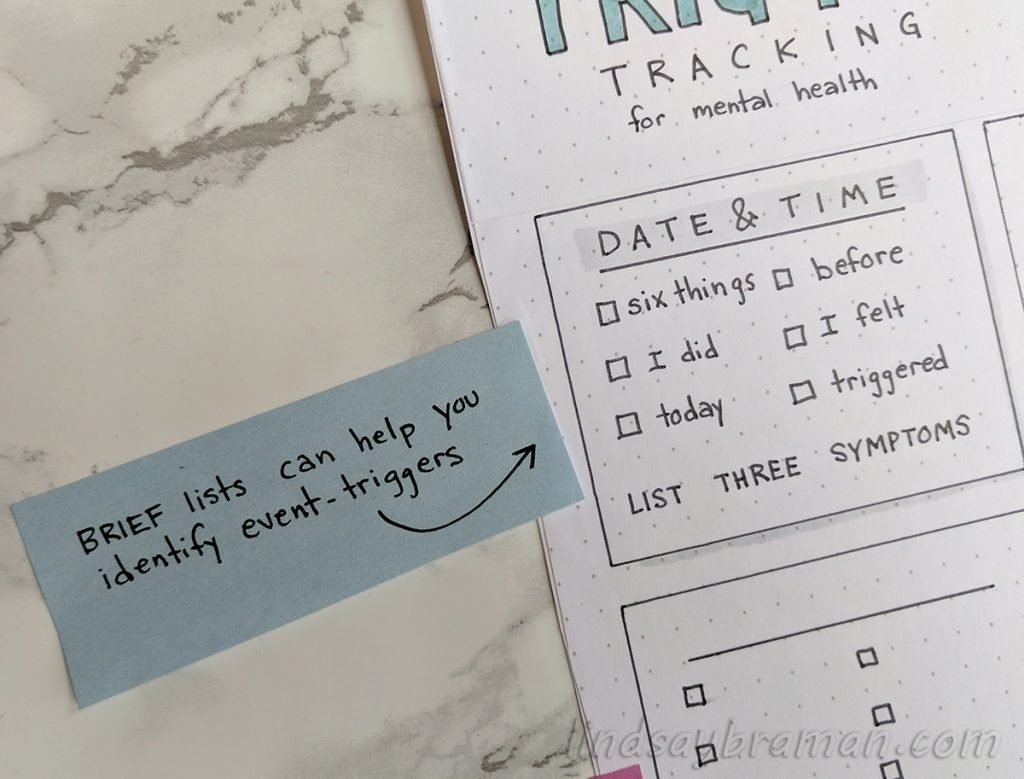
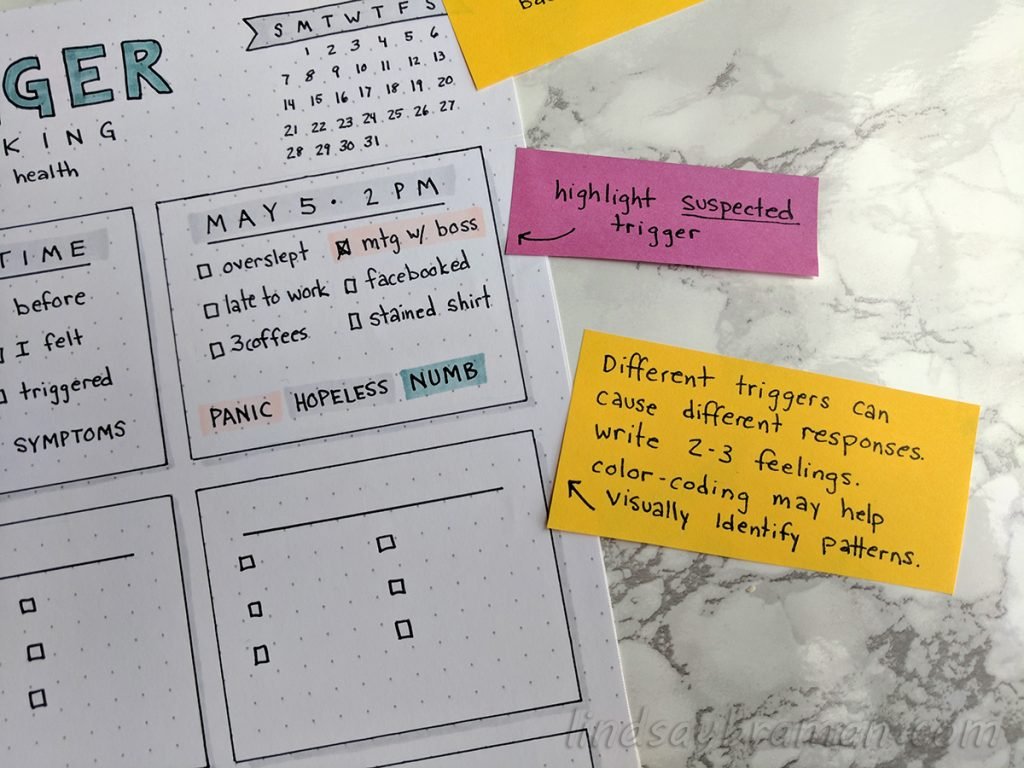
At first, gaining self-awareness might include just noticing when you engage in the behavior. If you’re working on decreasing carbs, you might track each time you eat carbs, along with what was going on, what you were feeling, and what you were thinking when you ate them. Over time you’ll likely find a pattern. That pattern will give you clues as to what the prompting event or cue was that set off the path to eating carbs.
Taking the time to really understand your behavior will make your change ambitions much more successful. While you might assume going to the movies is what causes you to eat more carbs, you might find that what really sets this off is being in a crowded room.
Understanding this pattern tells you something about what you would need to do.
Increase Skills
In fact, it might give you something else to track…a behavior to increase. You may need to have some kind of skill in place to help you to decrease the behavior.
In its simplest form this might simply be recognizing that going into a crowded space is hard for you and makes you want to snack so you bring healthy low carb snacks. Other ideas might be to do anxiety management skill such as paced breathing.
Either way, now you have something important to track! Did you stock up on healthy snacks or use skills to reduce your anxiety resulting in avoiding the popcorn?
Understanding behavior change will help you tremendously in reaching your goals. When you know what to track and how to use it to your advantage you can make your bullet journal much more effective for you.
Ready to create better habits with your bullet journal? Check out The Best Habit Trackers to Try Now!
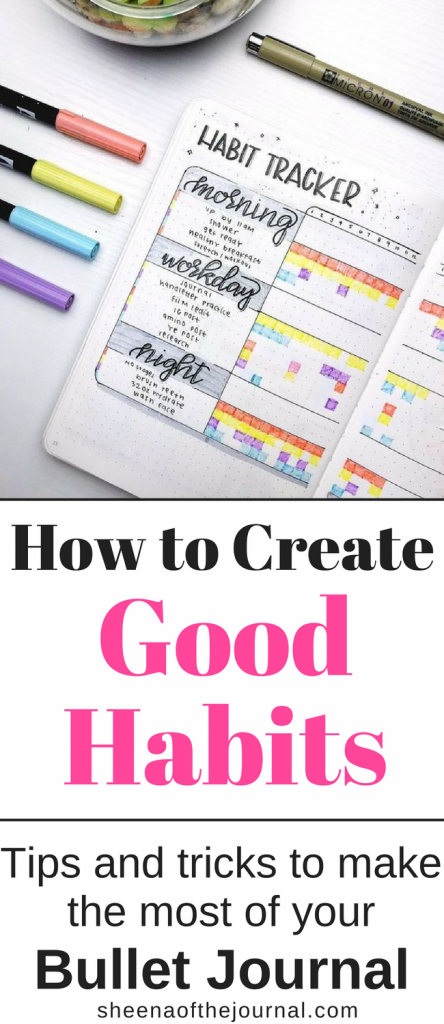


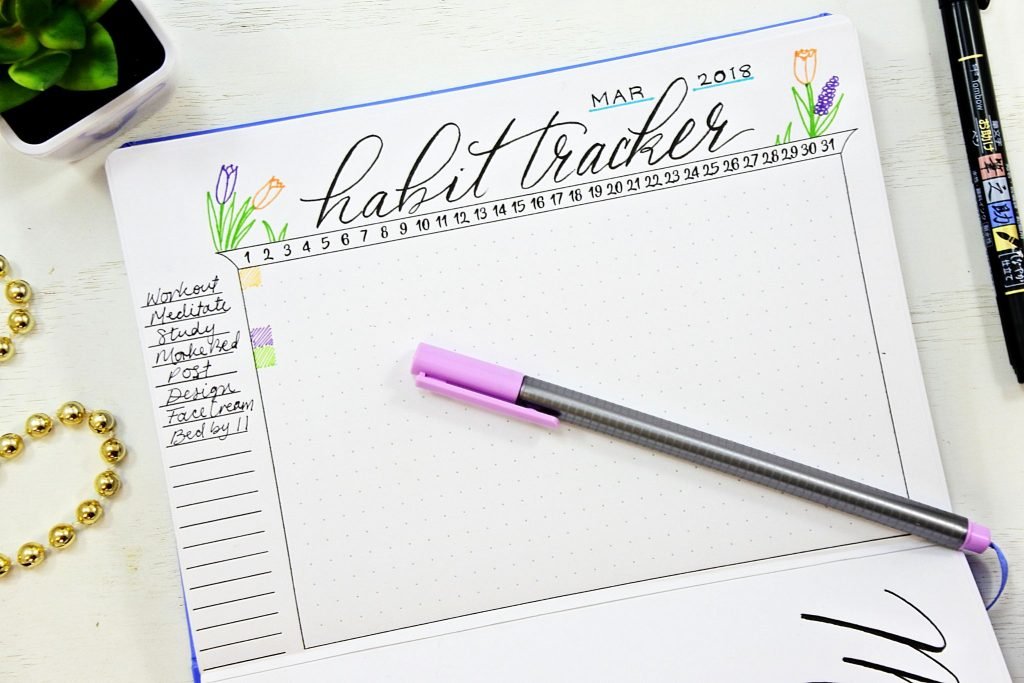


3 Comments
I’m curious how you utilize the trackers you include in your weekly printables (at least the 2019 combo pack I got). They allow you to “rate” things on a scale of 0-10, with every day of the week, and colored boxes to fill in. Is it for doing something up to 10x a day? Doing something up to 10 hours a day? I wanted to look to this page for inspiration about how to use trackers in various ways, but I’m not sure about that particular style.
I use that particular tracker to track “how much” of something I did that day. For example in the case of drinking water I can use the number scale to track how many glasses I drank, one day its 4, one day it’s 6, etc. I can do the same thing with hours of sleep. But when it comes to something like exercise, I rate on a scale of 1-10, how much exercise did I get today? If I went to the gym and ran errands, I’d probably rate that as an 8, but if I sat at my computer most of the day that would be a 1. When it’s all filled out you get a cool line graph effect.
If you’d like to see a picture example and more details, I also have an explanation of the weekly tracker in this post:https://www.sheenaofthejournal.com/printables/bullet-journal-setup-2019/
Scroll down to the bottom of the January pages to see the pic!
Pingback: Bullet Journal Ideas (The big-ass list with over 1,000 resources for everyone from beginner to Instagram-famous expert.) | Your Visual Journal